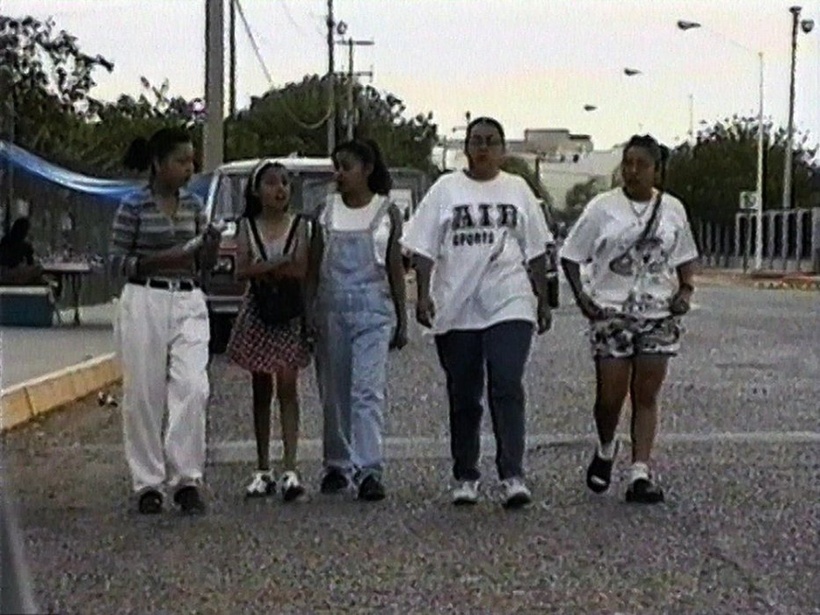Performing the Border (Ursula Biemann, 1999) (Patreon)
Content

Given my ambivalence about the place of the essay-film / video-essay in the current avant-garde landscape, it seemed like I should learn more about the history of the form and some of its more well-regarded applications. Various academics in my ambit (including my lovely wife Jen Wingard) have been showing Ursula Biemann's films in their classes for quite some time. This in itself gave me pause, since most of the folks incorporating Biemann into their syllabi are people with no particular interest in film per se. I expected a well-informed but formally unspectacular TED Talk with visual aids.
I was mostly wrong. Performing the Border is heavily reliant on explanatory chyrons and talking head interviews. But there's quite a bit more happening here on both a theoretical and a cinematic level. Biemann's film focuses on Ciudad Juarez at the end of the 1990s, when the passage of NAFTA turned the border city into a Mexican enterprise zone for (mostly) American businesses. Manufacturers could move their production to Mexico and receive massive tax breaks. The rise of maquilas introduces a number of geopolitical contradictions along the border, the most obvious one being the easy transport of commodities between Mexico and the U.S. and the intensification of U.S. border patrol. Goods have more right to free movement than the human beings producing them.

But Performing the Border is quite unique, in that Biemann is able to clearly articulate the collusion between global capital and sexist ideology. The majority of workers hired in the maquilas were women, for several reasons. They were seen as being easier to intimidate, less likely to have the necessary skills and education to try and unionize, and initially the women were bringing in a second income. As unemployment skyrocketed outside the factories, Mexican women became the primary breadwinners, a blow to traditional machismo.
As Performing the Border shows, these conditions coalesced to produce a kind of terror zone. Hundreds of women were raped and murdered in and around Juarez, and Biemann hears from both women factory workers and the families of the dead and the missing, all of whom suggest that the killings were a form of revenge, punishment for women's newfound economic independence. Likewise, it's noted that the disposability of the workers in the maquilas -- there's always someone else ready to take your job -- mirrors the cultural attitude that women can be indiscriminately murdered.

As an example of a particular type of essay-film, one in which aesthetic considerations are secondary to clear communication, Performing the Border remains impressive, since Biemann does in fact make her arguments through montage, split-screens, and sound/image juxtapositions. Many of the films that have arrived in Biemann's wake are not nearly as deft. Perhaps most significantly, Performing the Border offers a time capsule of a very specific moment in late capital, one that has concluded. Now we need Performing the People's Republic.
Performing the Border can be watched here.